Kyoto: Wagashi & Matcha / You Eat With Your Eyes First
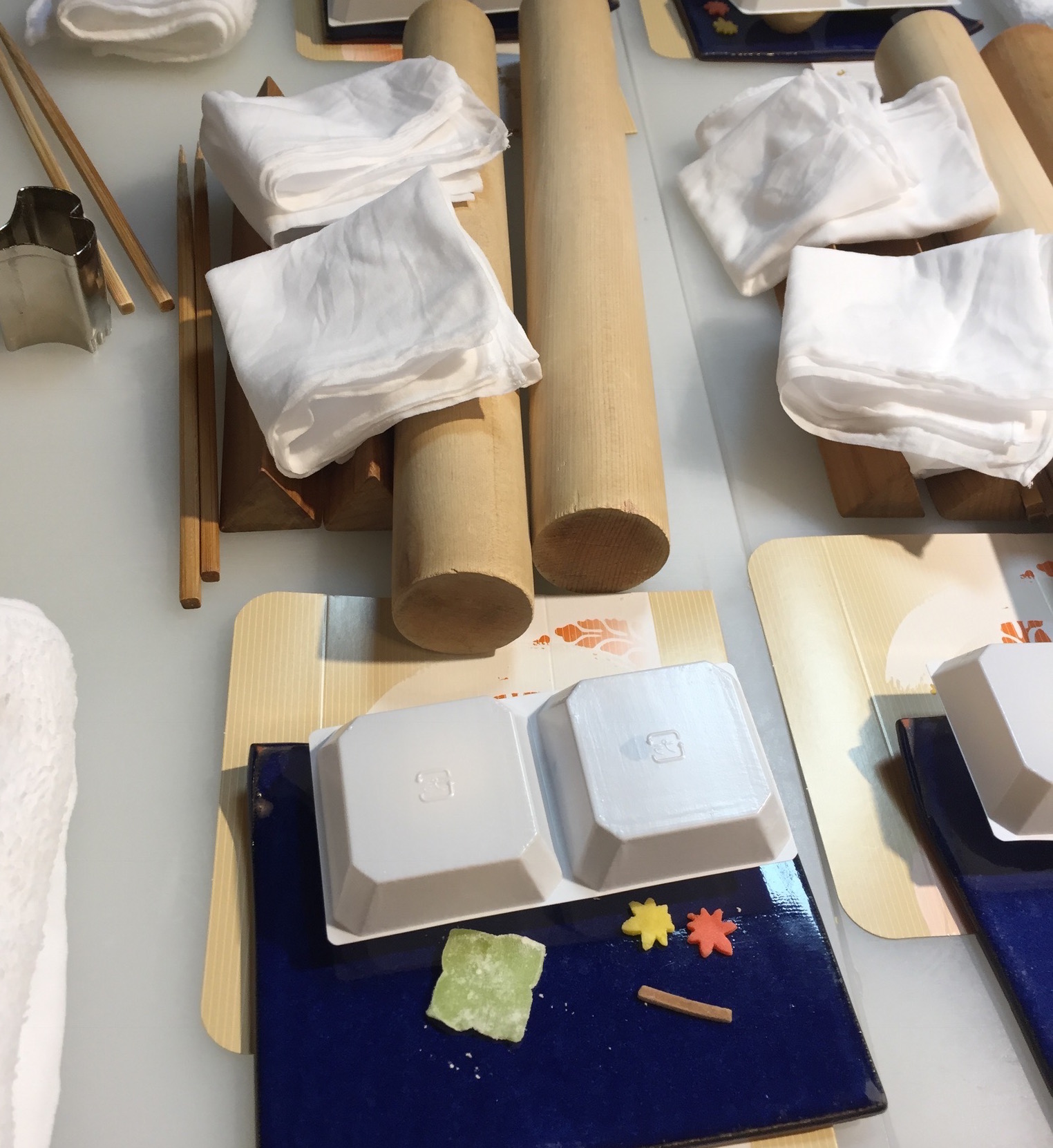
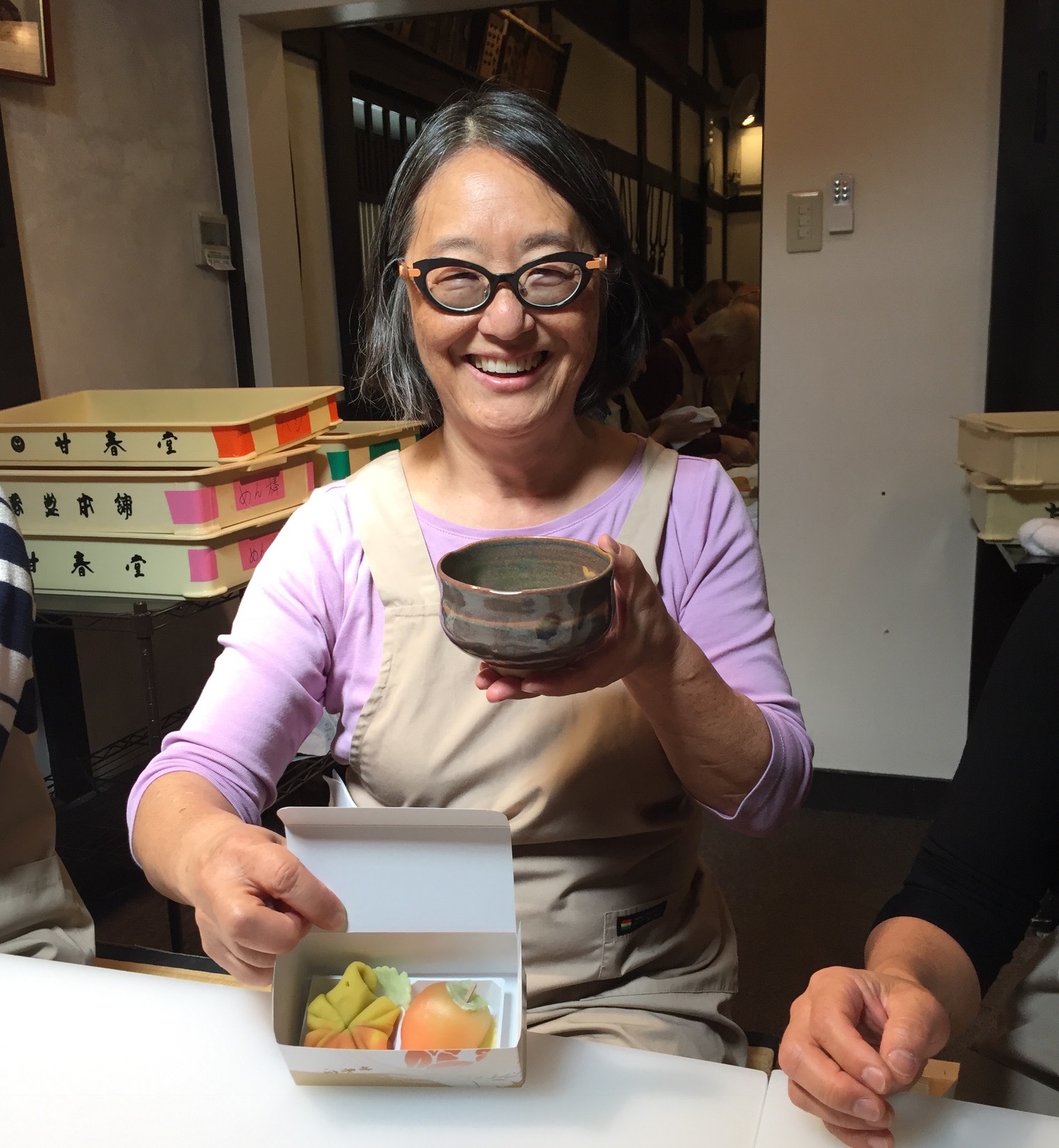
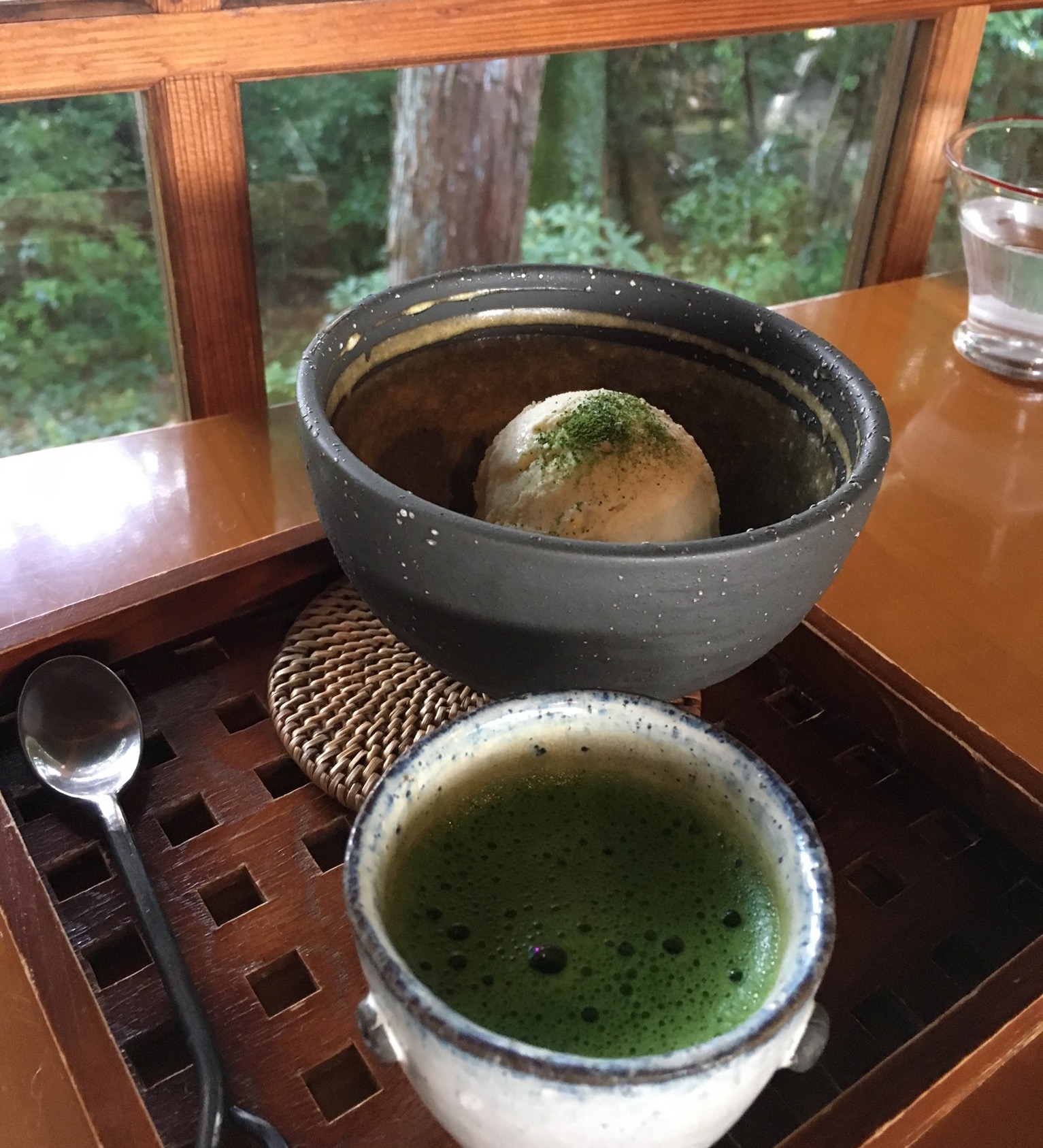
Mäneka:
Linda and I had taken this wagashi-forming class on our last trip to Japan, but felt it would be a fun repeat activity, especially since wagashi are highly seasonal and we were coming in autumn rather than spring. Apparently we were not the only ones who felt this was an experience worth repeating, as a couple in the class from Osaka was doing it for their fifth time. We did not bring an interpreter this time, but the instructor, who claimed to speak only Japanese, did his best with us.
The menu for the class’s production consisted of four items: gingko leaves (higashi kizato - rolled and cut out sweet dough), persimmon (white an wrapped in uiro, a translucent steamed rice and kudzu dough), maple leaf (dark an in a mochiko/white an wrapper), and momiji (dark an covered in multi-colored strands of light an).
After some finger calisthenics to warm up our left (wagashi-forming) hands we set to work on our gingko leaves. We were given a small piece of sweetened rice flour and sugar dough, one half of which was green and the other yellow. We rolled it out thinly and then cut out two gingko shaped pieces. Easy and beautiful!
The persimmon was more of a challenge. We were handed a large orange piece and a small green ball of uiro. First, we flattened the orange one into a circle three fingers wide, formed it into a bowl, inserted the green ball into it, inverted it, and encased the green in the orange with a downward pulling motion. This larger sphere was then flattened to create a subtle green coloration in the center of the disc. This process, sans the final flattening, was repeated, inserting the an into the uiro. The final step was to add leaves and a stem. Very lifelike!
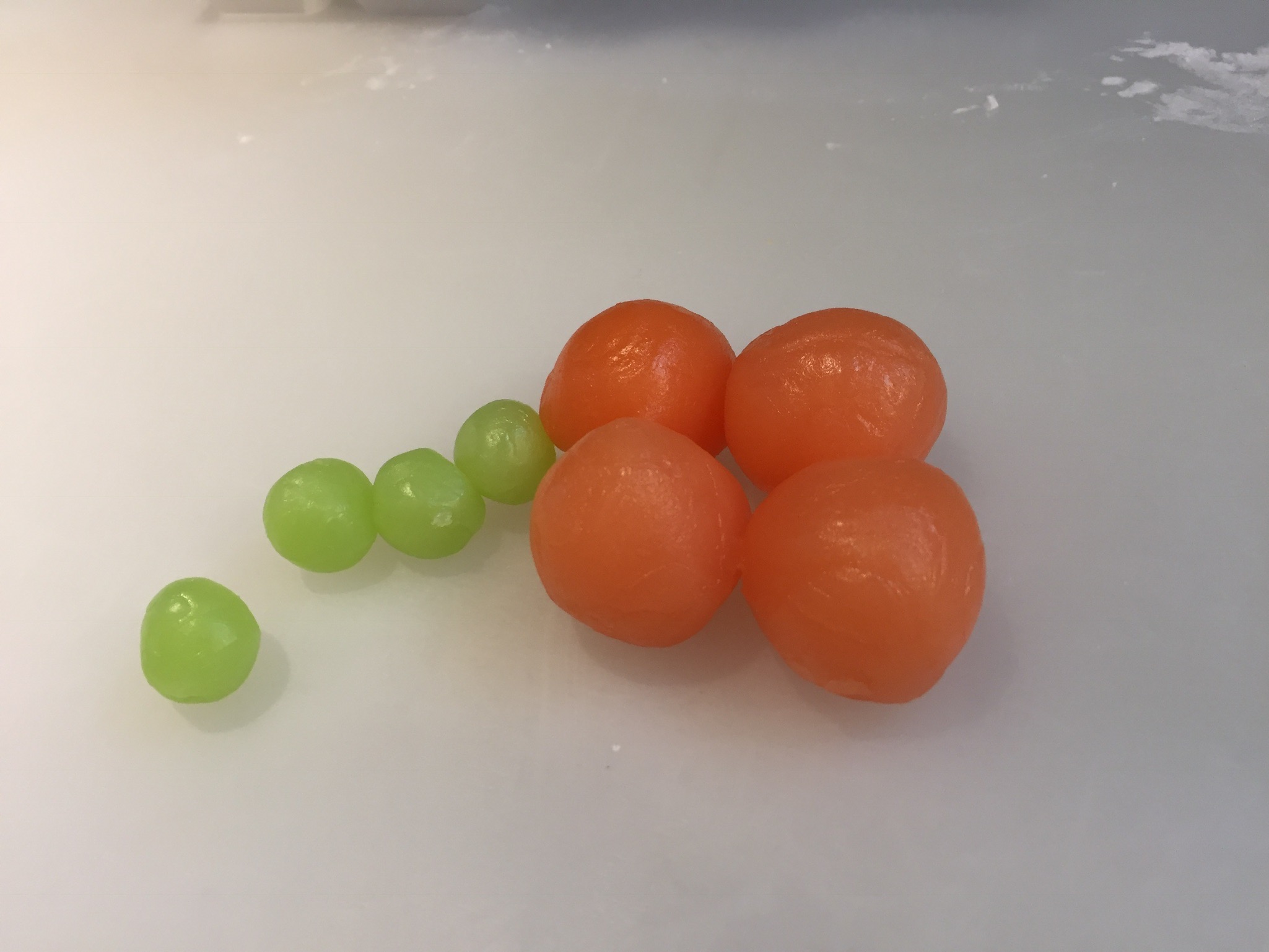
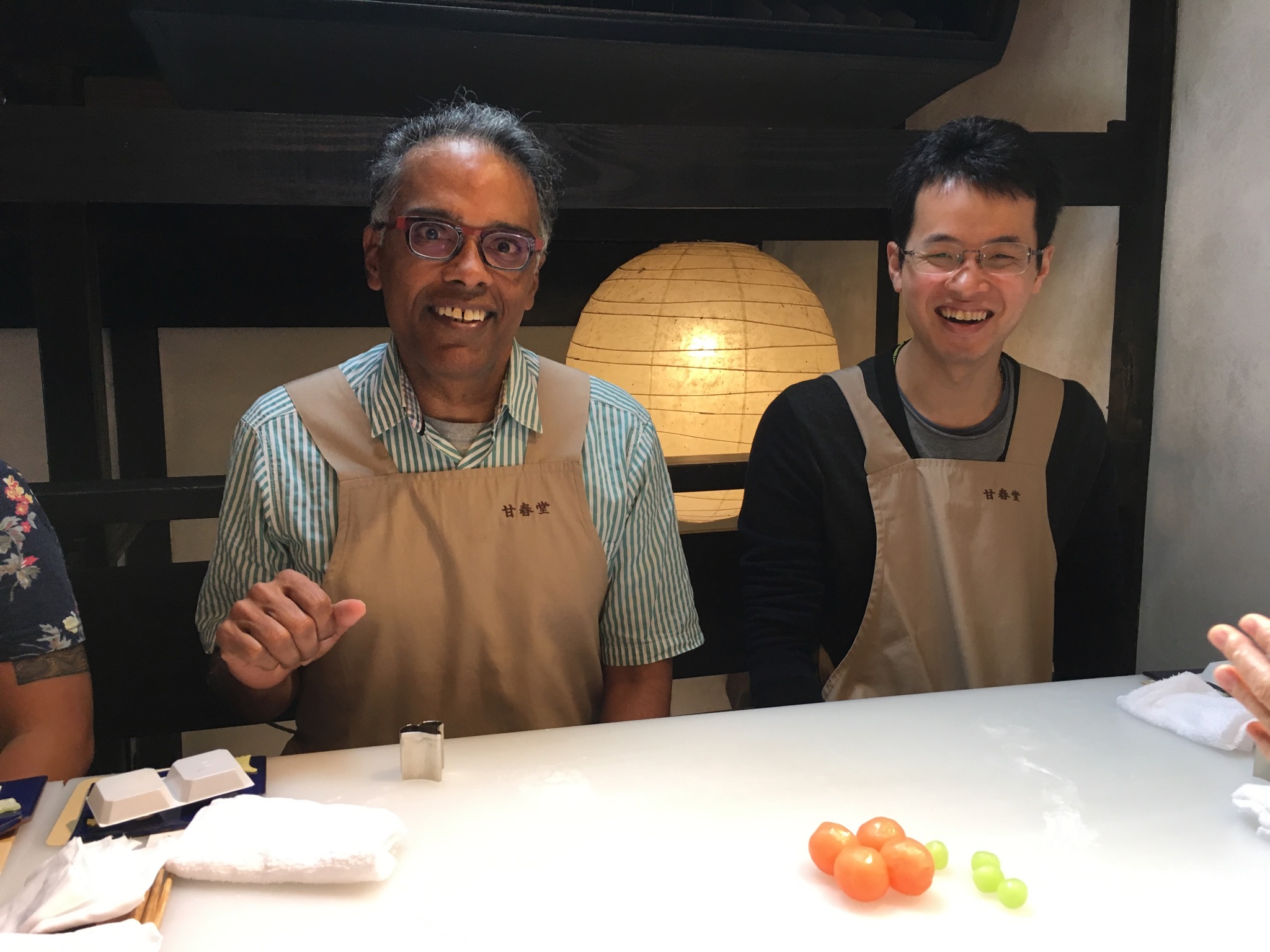
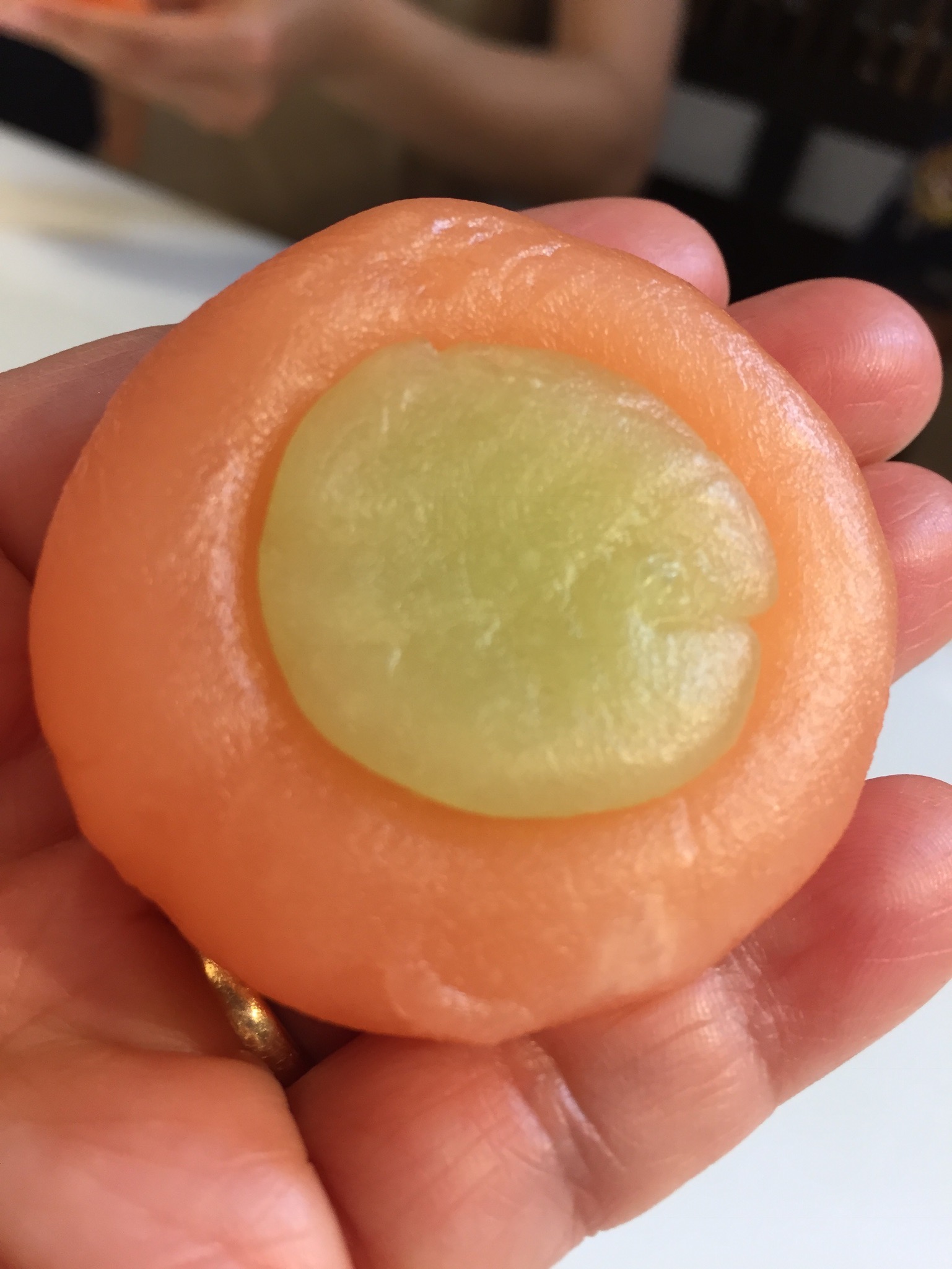
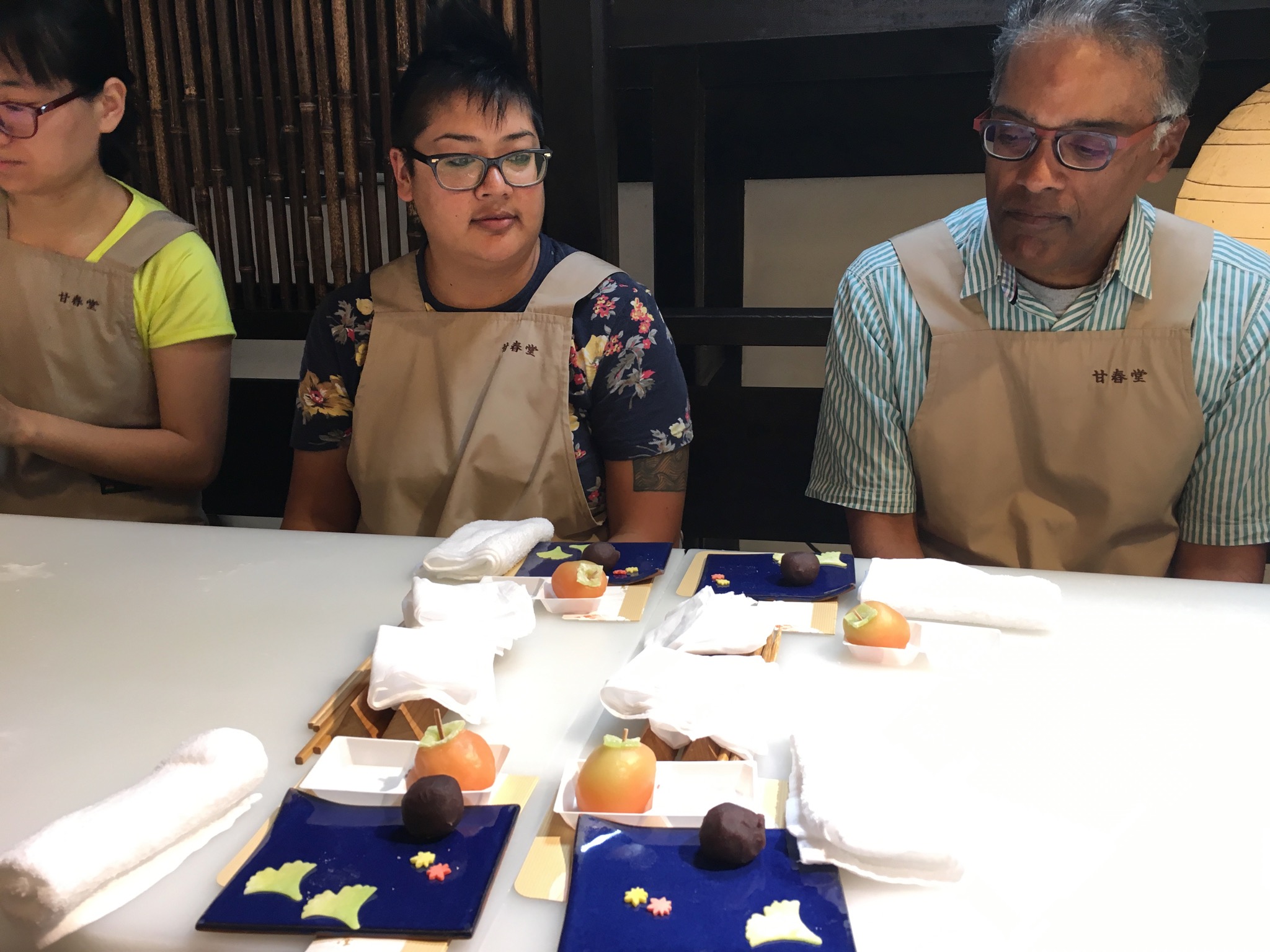
The maple leaf posed some difficulty. The first few steps, blending the two colors of outer an, encasing the dark an in the wrapper, and initial shaping, went smoothly. When it came time to mark the top of the wagashi with the long wooden triangle, Balaram misinterpreted the directions and did a criss-cross pattern instead of the intended fan-like pattern. “Oh my gosh, oh my gosh,” was the instructor’s reaction to this “innovative” new design, followed by, “I miss you.”
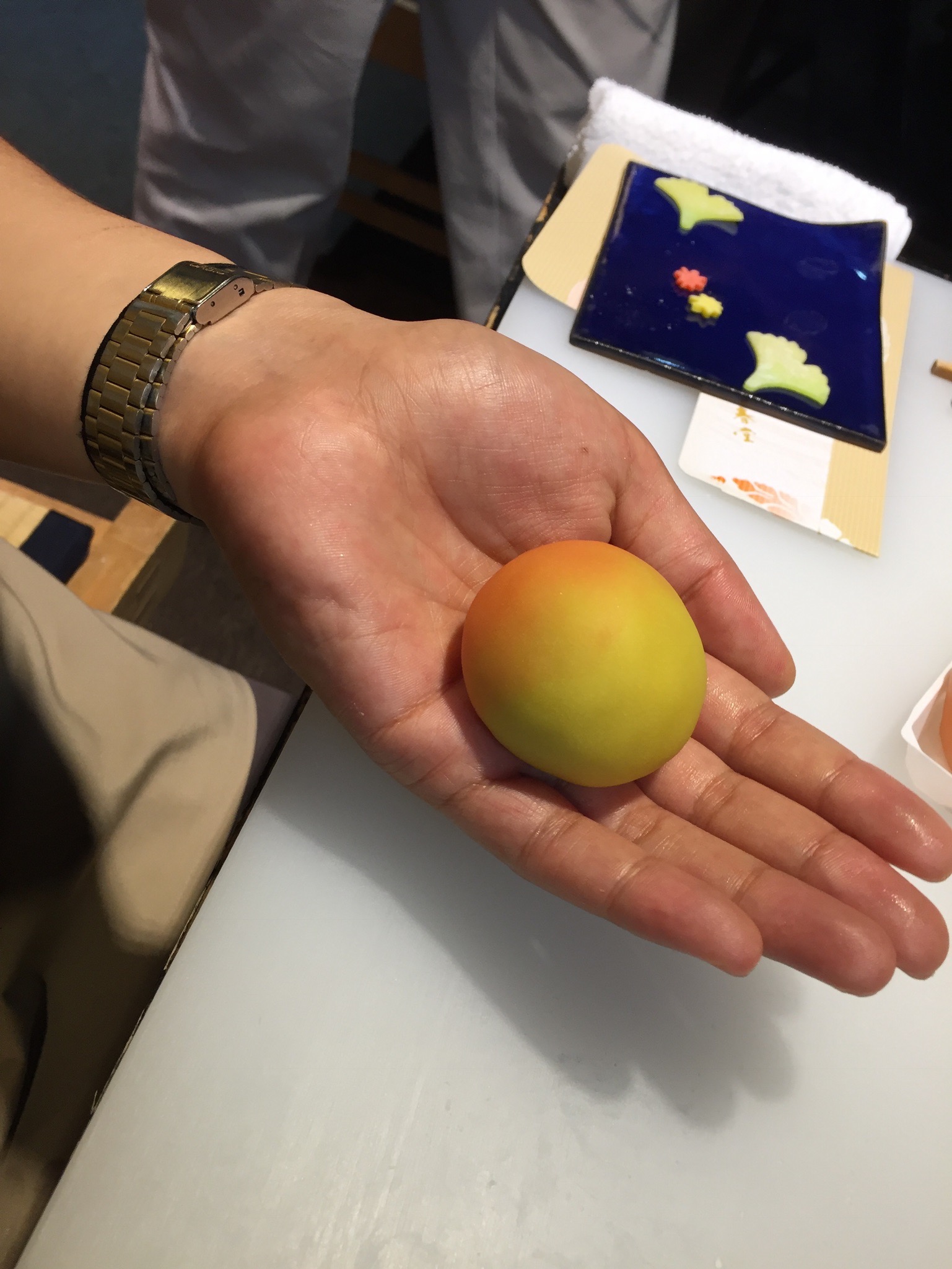
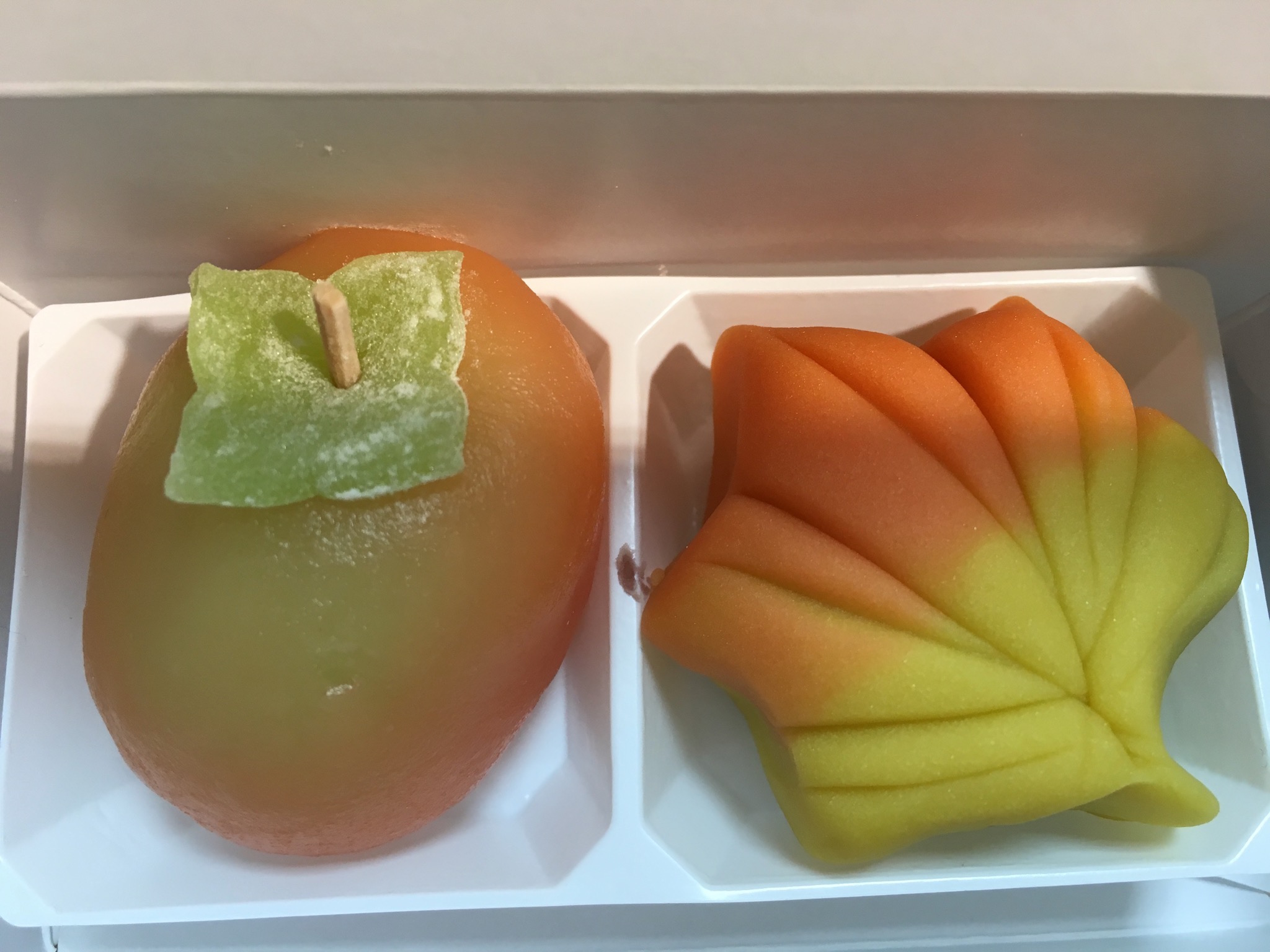
For the final momiji piece, we pushed two colored blocks of an through a sieve and used chopsticks to stick them to a ball of dark an (“dark beans ball” in our instructor’s words). These were topped off with two small candy leaves. We wrapped up the class by enjoying this wagashi with an expertly prepared cup of matcha. Who doesn’t love tea time? The bitterness of the tea perfectly complements the sweetness of the an. Quite the way to get into the fall spirit. 🍂🍵 Too bad we were just a few weeks too early to witness real momoji in non-confectionary form.
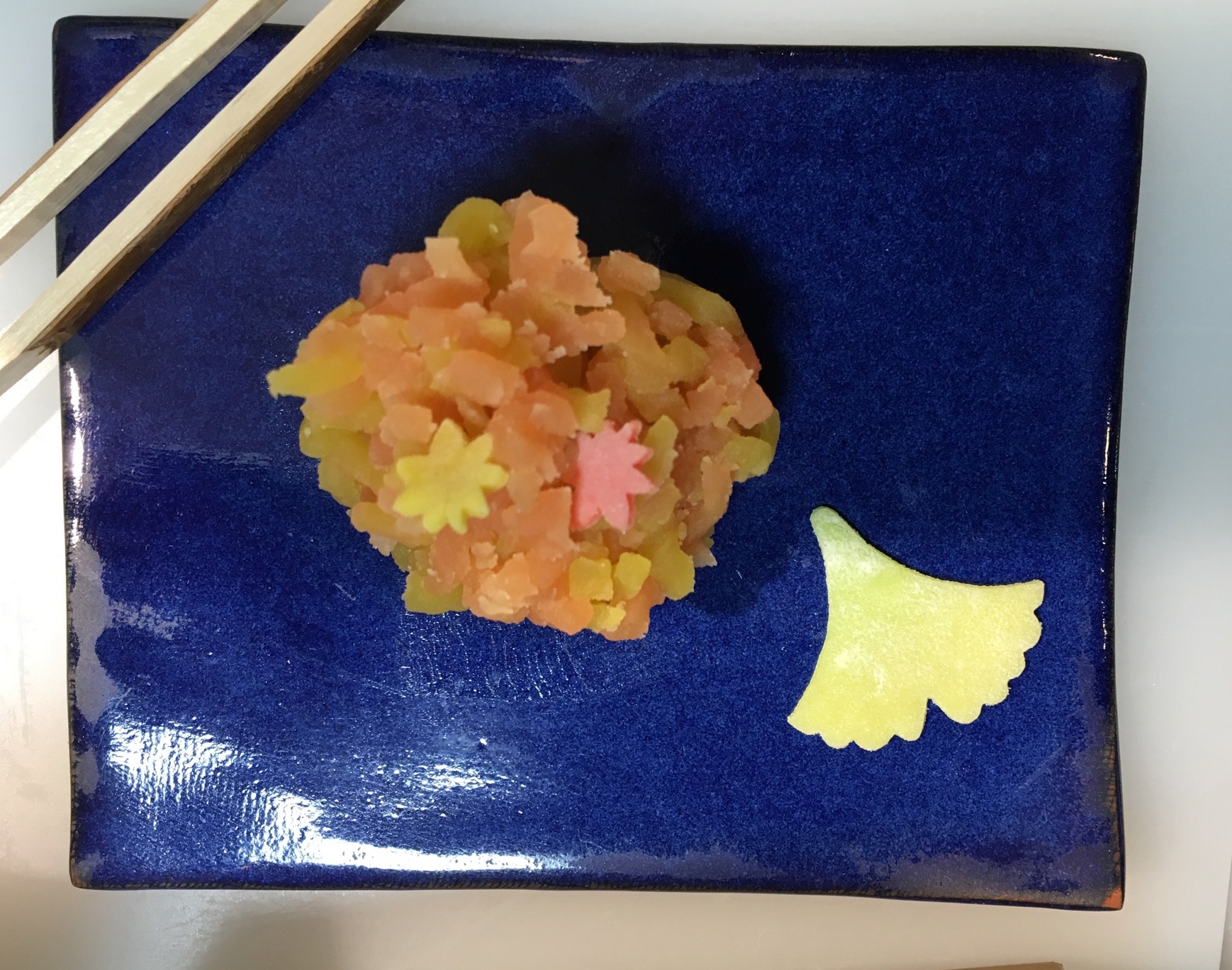
At the end of class, Balaram was gifted the maple leaf the instructor had done as a demonstration to make up for his going rogue with the design and Lori was given his two others for her birthday. Our instructor was a lively gent who has been making wagashi for over 30 years. His dexterity, aesthetic eye, and respect for his craft were admirable. Even after my second class I would not hesitate to go back for a third visit.
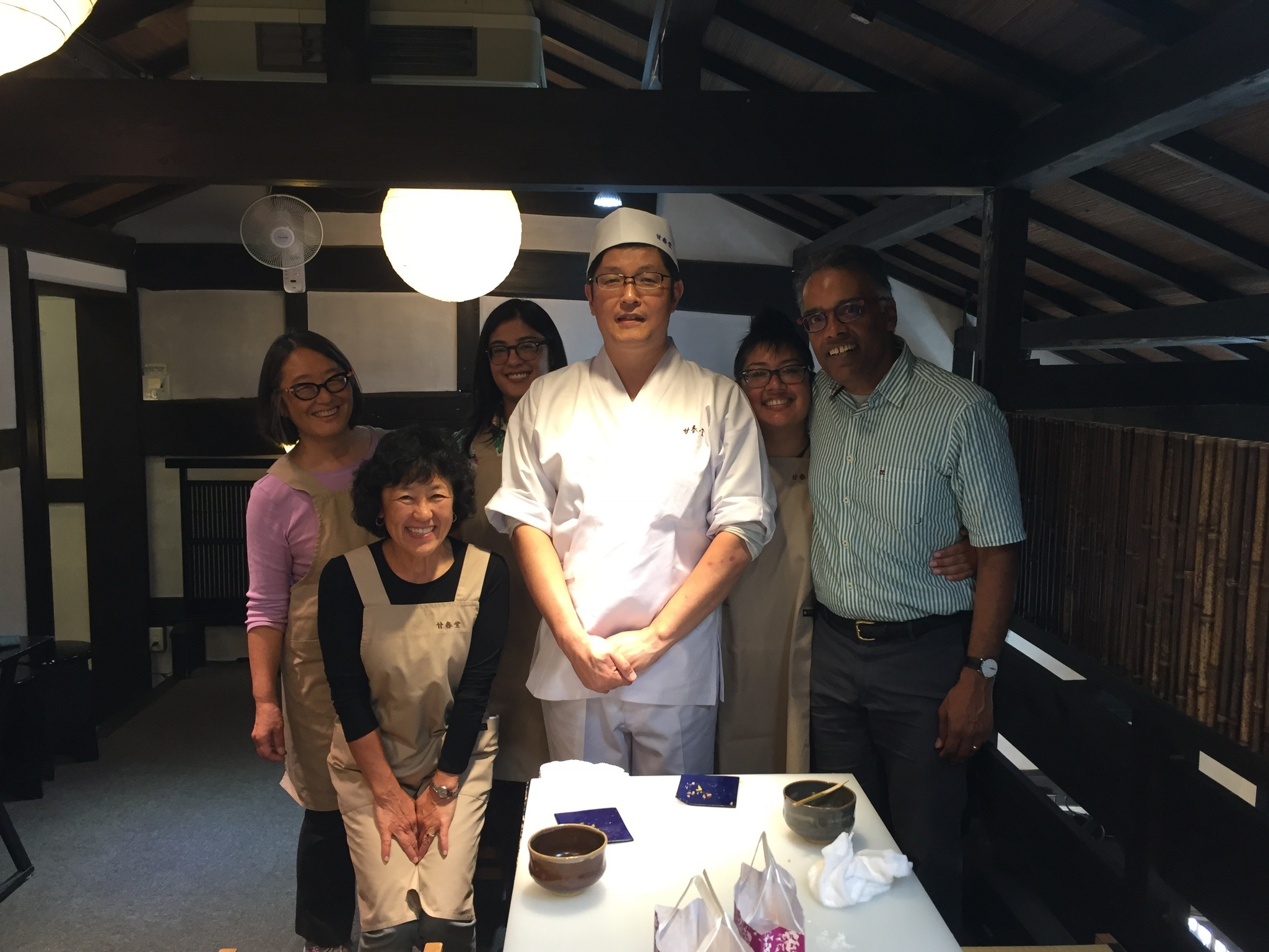
Kamala:
If you are someone who was ever quite taken with the Secret Garden or FernGully or any other story about a personal, enchanting spot in the woods, and you like desserts, you might appreciate Cafe Mo-an as much as we did. Tucked away in the peaceful woods at the top of Yoshida hill in Kyoto, Cafe Mo-an came highly recommended by a friend of Mäneka’s named Nhi—who is actually responsible for a few of our most exceptional taste adventures.
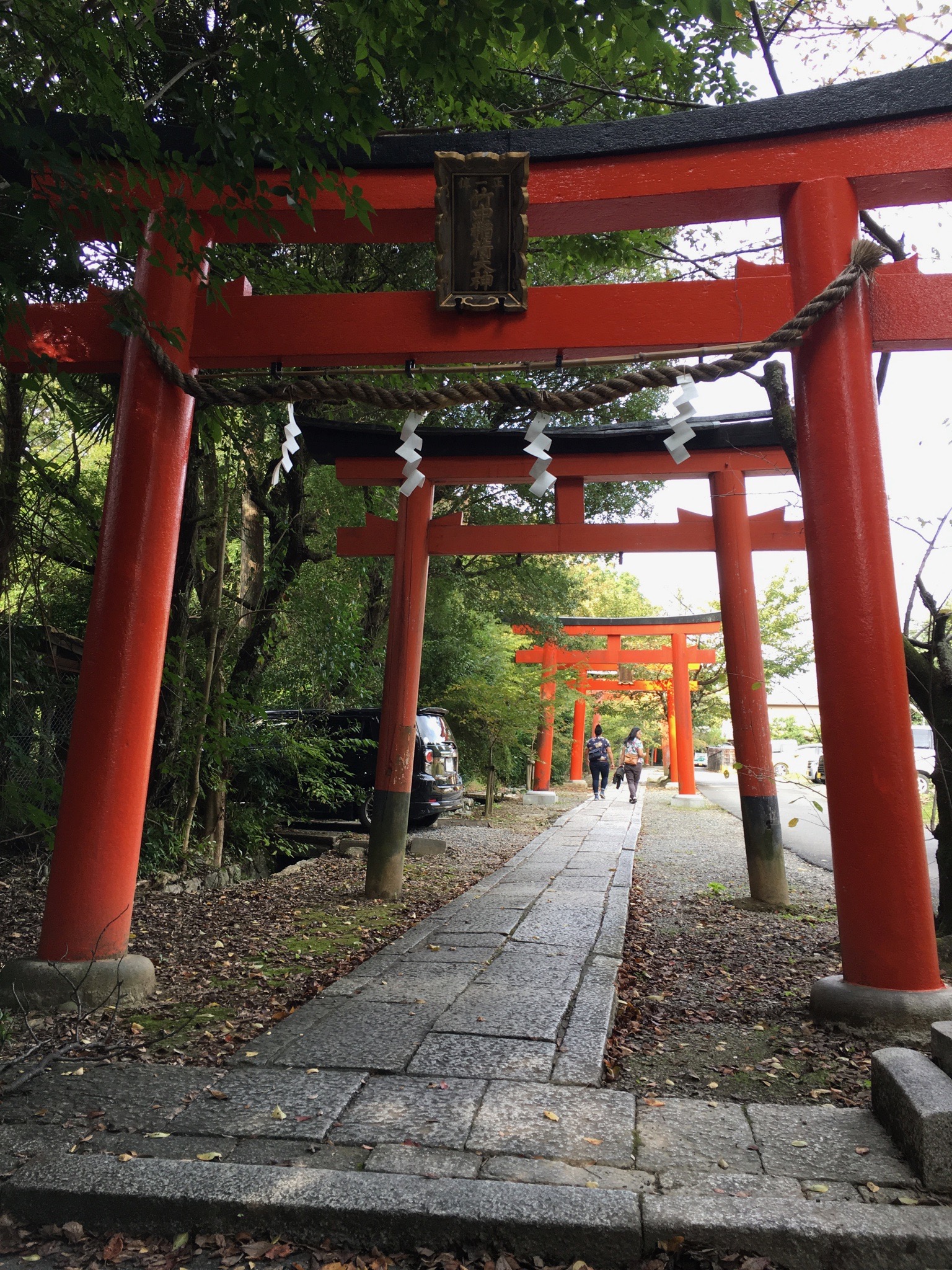
The cafe was in a little wooden cottage with an elegant stone path, and inside was lined with windows that offer a panoramic view of Kyoto. It’s perhaps best described by Balaram: “It’s an aerie. You don’t usually see those outside of a crossword puzzle.” It was also an aerie with a lot of rules: no taking too many photos, no photos with other guests in them, and no ruining the atmosphere. We believe we achieved this.
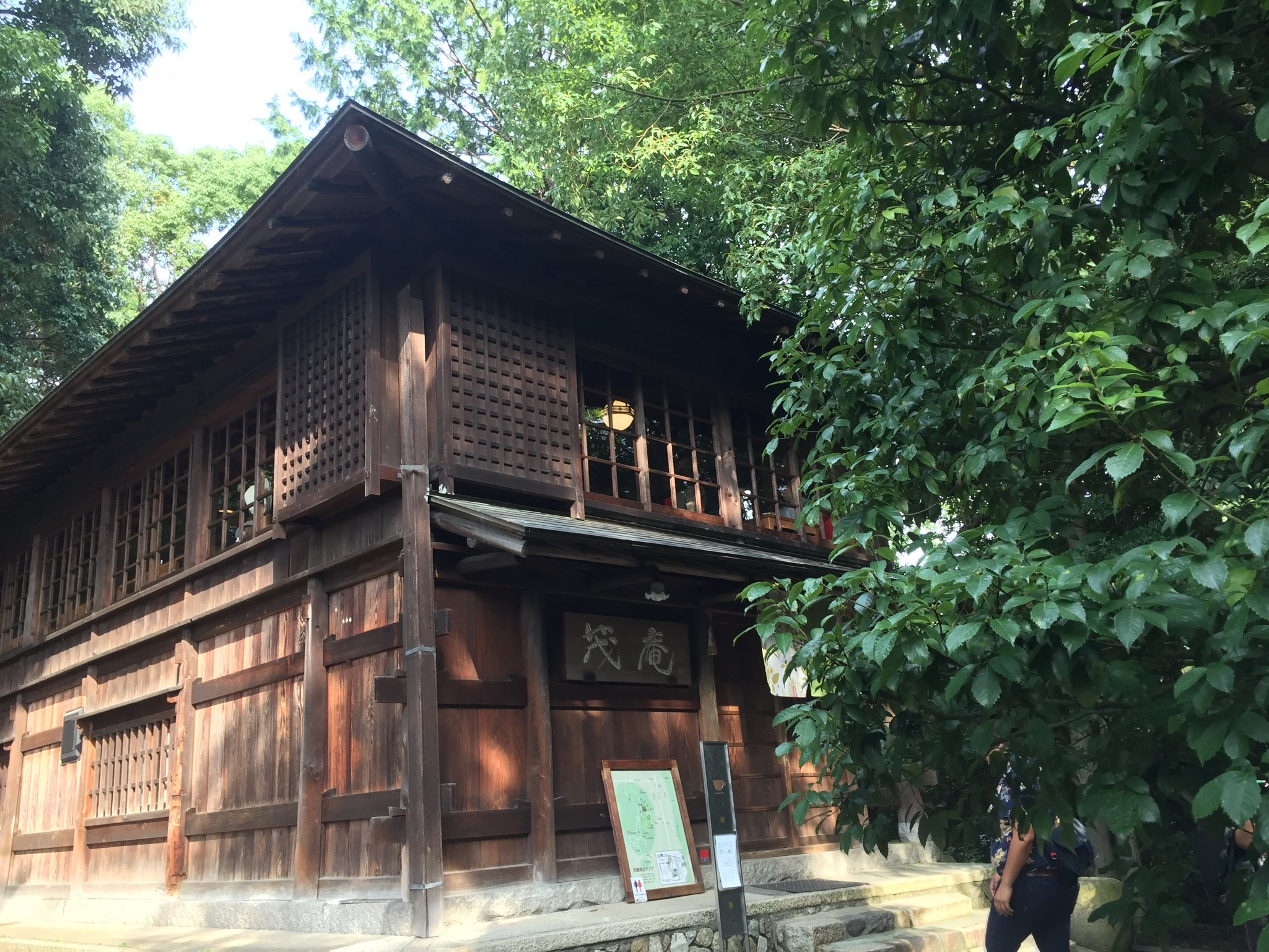
One of the main draws was the matcha affogato, so Mäneka had one, and Linda and I shared one. They were delicious, and as with all the best matcha desserts, vibrantly green. Those without Mäneka’s sweet tooth, after a morning making sweets, wanted some savory food, and we opted for the pita sandwich set—which Lori had at first read as Peter Pan sets. Those came with an excellent mushroom soup, and were filled with unusual pita combos like gobo, eggplant, beef. Lori and Balaram ended their meal with a sweet potato chiffon cake, and a trio of chocolate nut cookies. The cake was a lovely soft texture—though I agreed with Balaram that the chunks of sweet potato were strange.
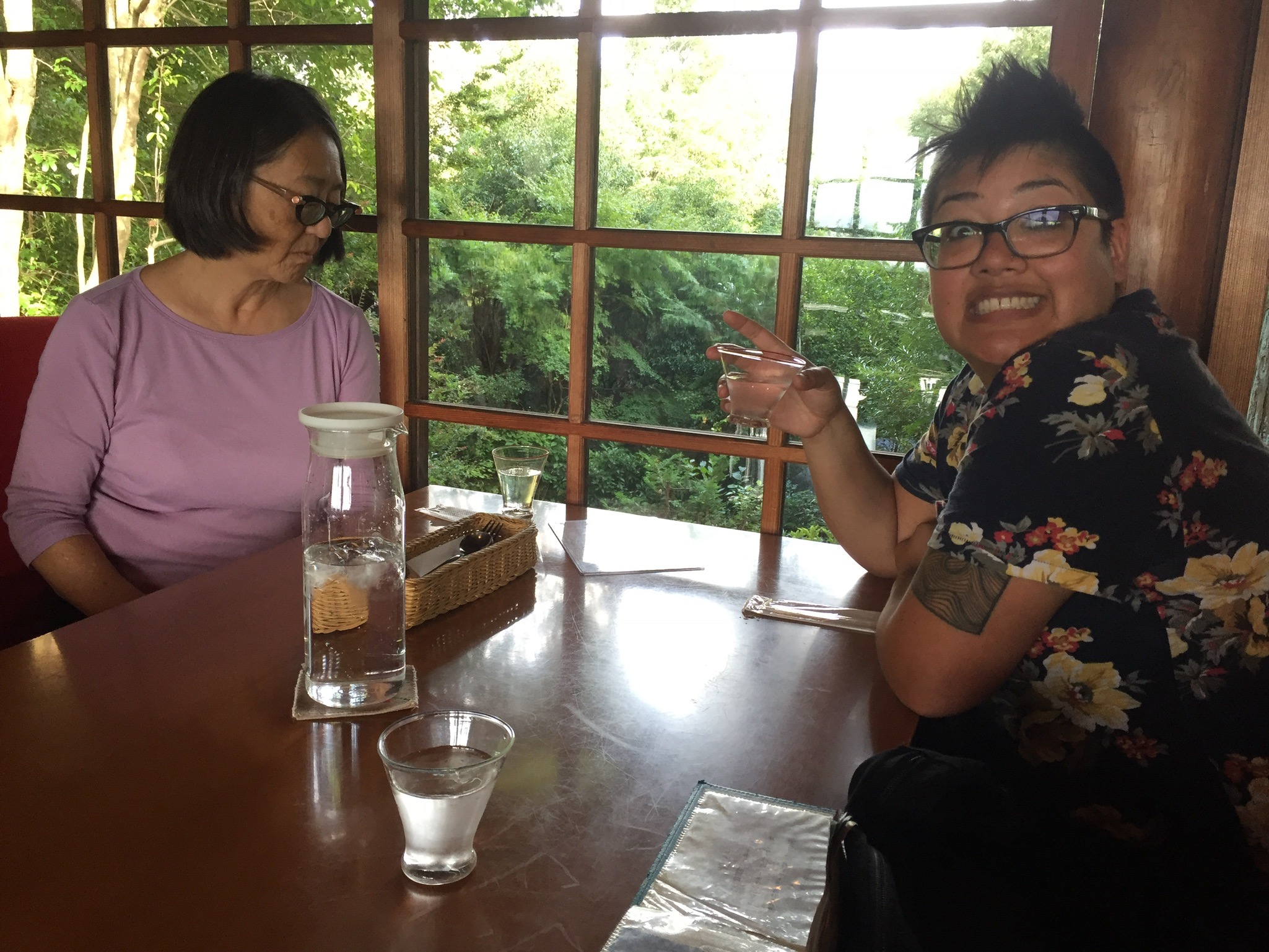
We ended the evening with a stroll through Gion, to see the old theater and buildings, and of course to shop and to judge the throngs of gaijin hakujin tourists. Our biggest buys of the evening came at a tsukemono shop, where we all grazed enthusiastically on pickled roots and vegetables of all manner and went hog wild when we were informed that they didn’t need to be refrigerated. Mäneka bought a matcha soft-serve cone at Tsujiri—far and away the best matcha soft-serve we’ve ever had. It was just so green and tea-ish and creamy!
Linda:
Throughout New Year’s morning, it was me or a cousins’ job to fetch a sprig of nanten (heavenly bamboo) or Japanese maple leaves from their backyard for the final finishing touches on dishes. Grandma Ohye wouldn’t dream of sending out a New Year’s dish to the table “naked”.
Her eye must live on in me. How else to explain the awe and inspiration from the all the food displays in Japan? Can’t wait to mess around with displaying salads like fireworks!
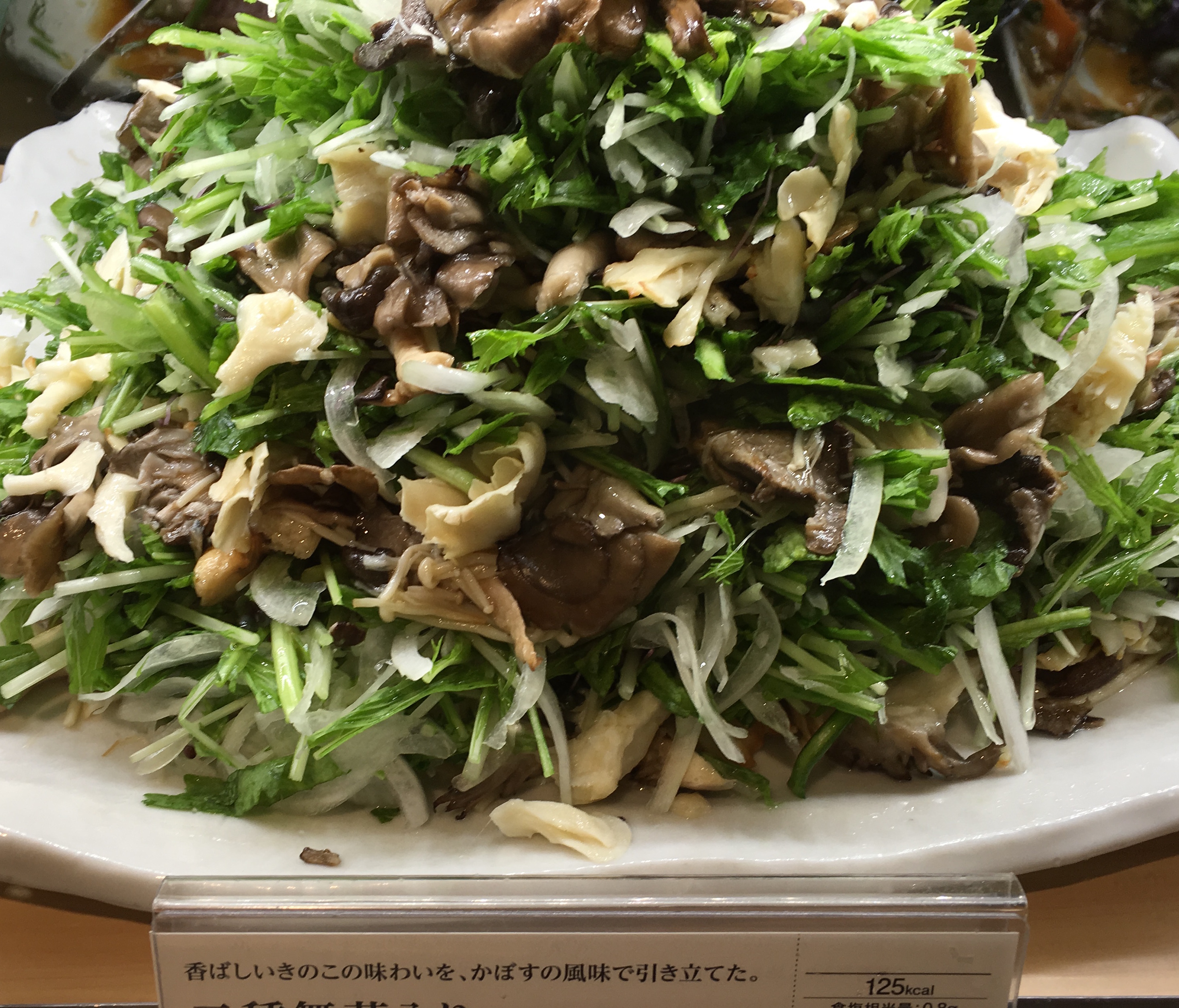
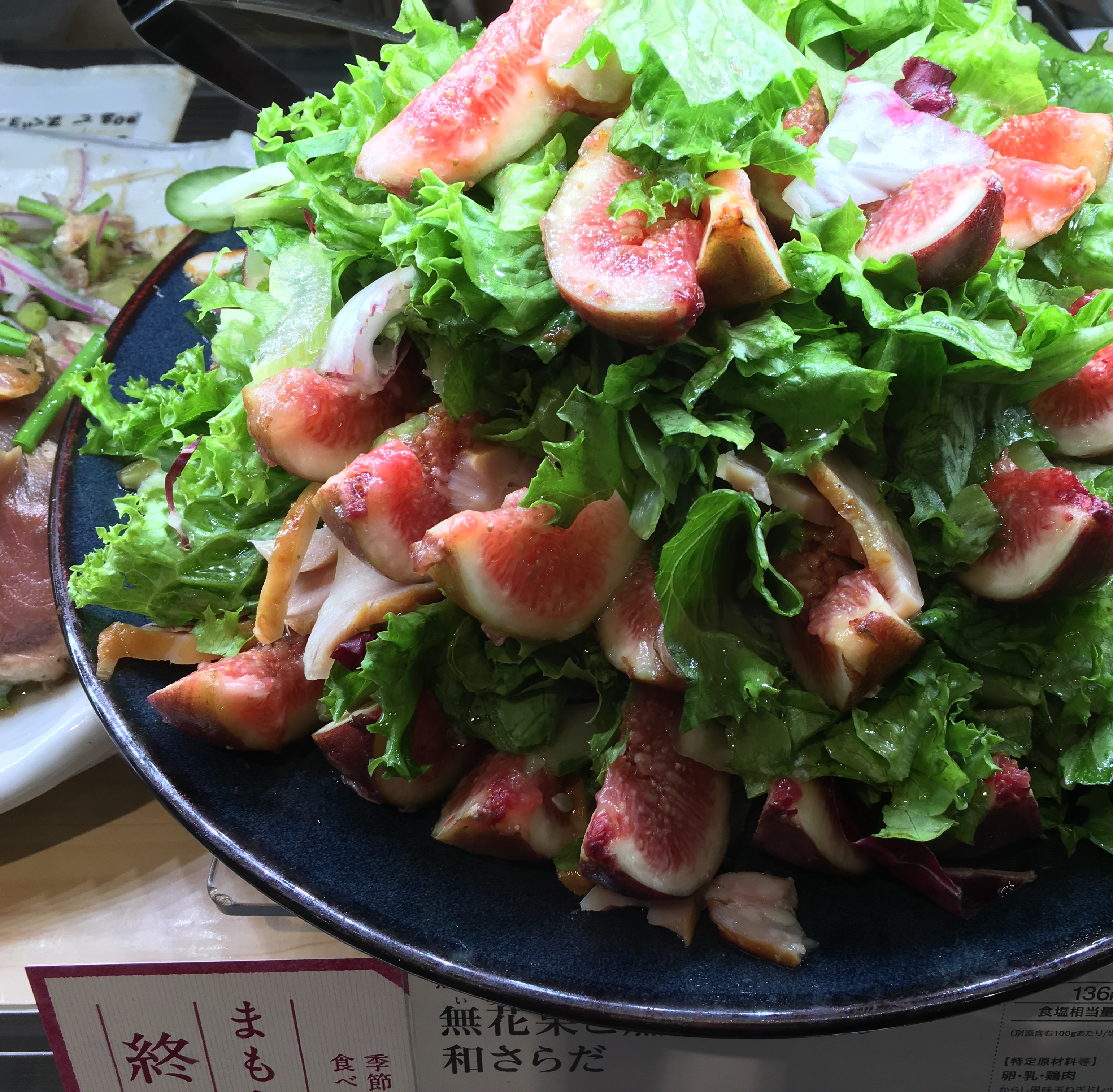
Lori:
When I lived in Japan as a child, there were uniformed ladies who stood at the bottom and top of every high-end department store escalator greeting you with a bow, and in elevators announcing as the elevator reached each floor. Those jobs seemed to have disappeared, but everyday I notice one more person who’s sole purpose in life, at least in terms of their 8 hour job, is to make Japan a better (and more efficient) place for you and me. Here’s a few examples:
Take the pink ladies and blue men who wait for the shinkansen (bullet train) to arrive at Tokyo eki (station). As soon as all passengers disembark, they place a chain across the entrances to the train and begin their efficient clean-up of the train. Through the windows we watched them pick-up trash, tidy the cars, and finally turn every bank of seats to face front. As if in unison, pink and blue workers remove the chain, leave the train, and we are allowed to begin our journey in creature comfort.
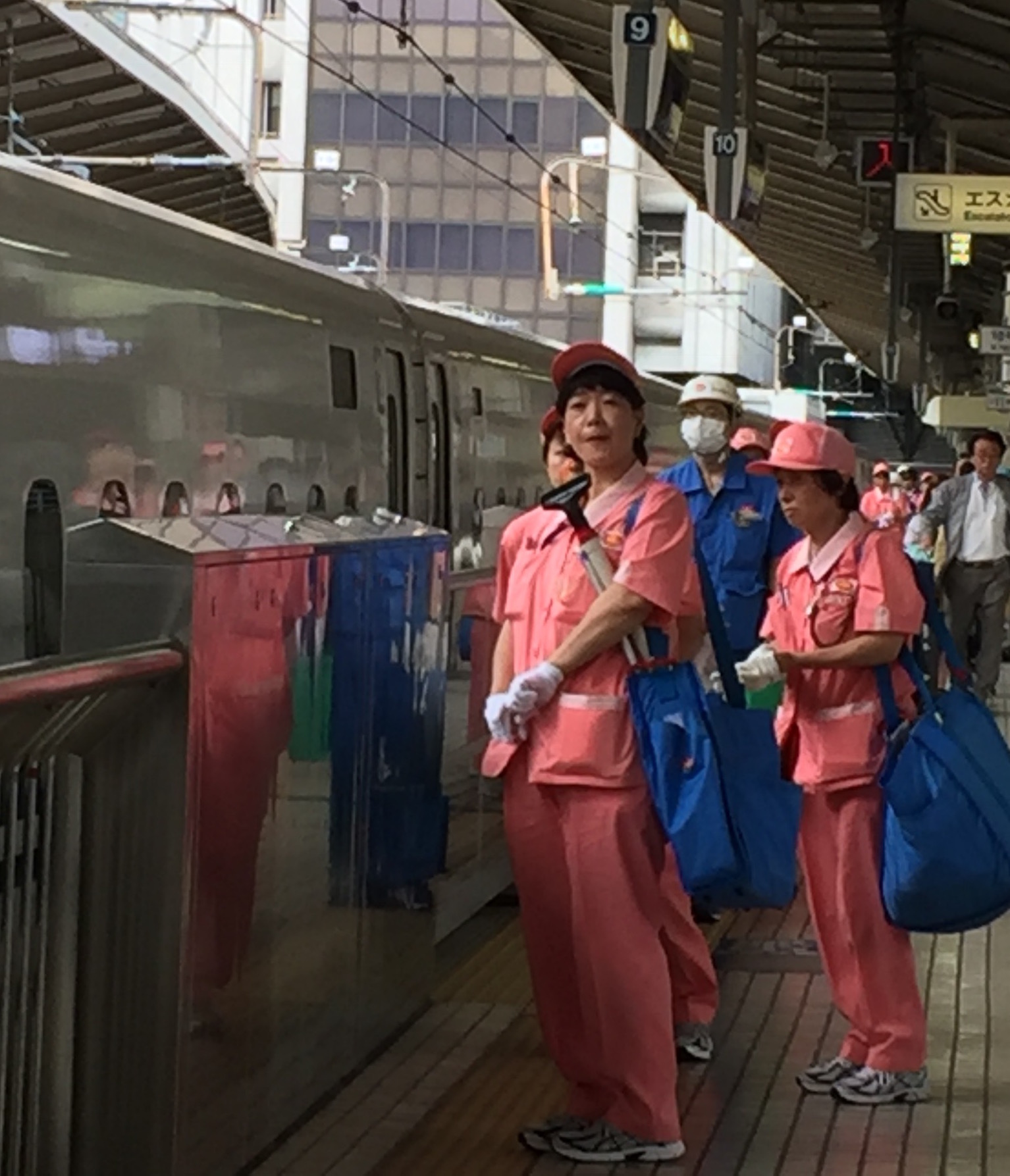
Tonight we saw three parking lot attendants, in light blue policeman-looking uniforms complete with caps, neon flashing vests, and orange flashlight flares, standing at an intersection to a gigantic shopping mall, (not on a super busy street mind you), directing traffic in and out of the lot. They were reminiscent of the people who direct 777 and 787 on the runways as they sent both cars and pedestrians safely on their way with their dazzling choreography.
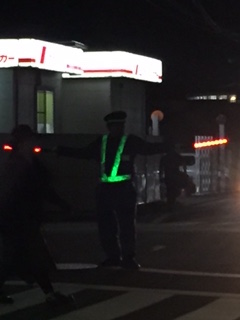
There was the lady at the “The Cube”, a strange modernistic shopping/dining structure with a giant multi-floor open air atrium. The various levels were accessed by escalators. Her job was to clean the clear glass walls on the escalators with her white towel. God forbid that someone might leave a fingerprint smudge on a rail.
